The Creta 1.4-litre turbo petrol DCT is as close to perfection as one can get in the segment and for that price, but can its few shortcomings have a bearing on your decision to buy it?
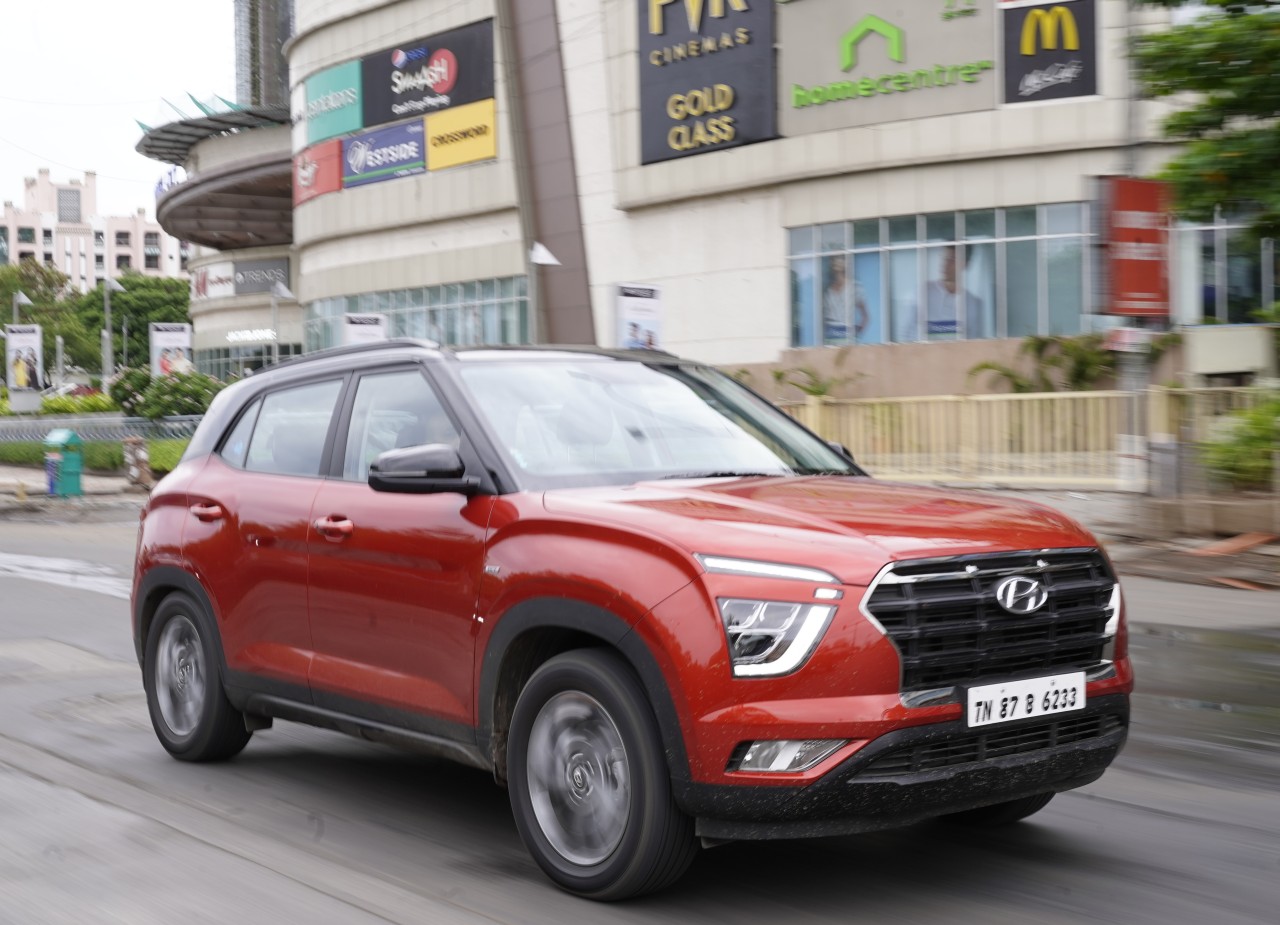
In the new-generation model, this 1.4-litre turbo petrol is clearly my favourite. The spirited motor comes with the option of a very quick and convenient seven-speed dual-clutch transmission which makes it a great pair for everyday driving and even for your adventurous weekend trip. This BS6 engine was first introduced by Kia on the Seltos and even though both the car models share plenty of the car parts and underpinnings, the two look poles apart from the outside.
[metaslider id=27350]
Design
The Creta looks a lot more unconventional and the smooth flowing lines merge elegantly into the soft curves of the body. The new design really sets it apart even from the first-generation Creta which had a more universal appeal. You can’t deny that the 2020 version looks modern and even more sophisticated than before. It follows Hyundai’s new SUV design language which has a distinguishably large “cascading” front grille as seen on larger SUVs from the Korean brand. What sets the tone for this version are the LED daytime running lights (DRL) and the split headlamps which, on higher variants like this one, come with a tri-beam projector set-up. I would have liked it if the turn indicators weren’t positioned so low near the foglamps and, maybe, the DRL could have doubled up as one.
There is plenty of muscle and character on the side profile, thanks to the 17-inch alloy wheels and strong contours over the wheel-arches. The floating roof is further enhanced by the contrasting highlights on the C-pillar and at the back the design gets more complex and busy, making it a great topic for debate. You get the split tail-lamps, a sleek brake-light strip and plenty of cuts and contours on the body. What mattered the most to me was the “Turbo” badge on the boot and the dual-exhaust tips exclusive to the 1.4-litre turbo GDI.
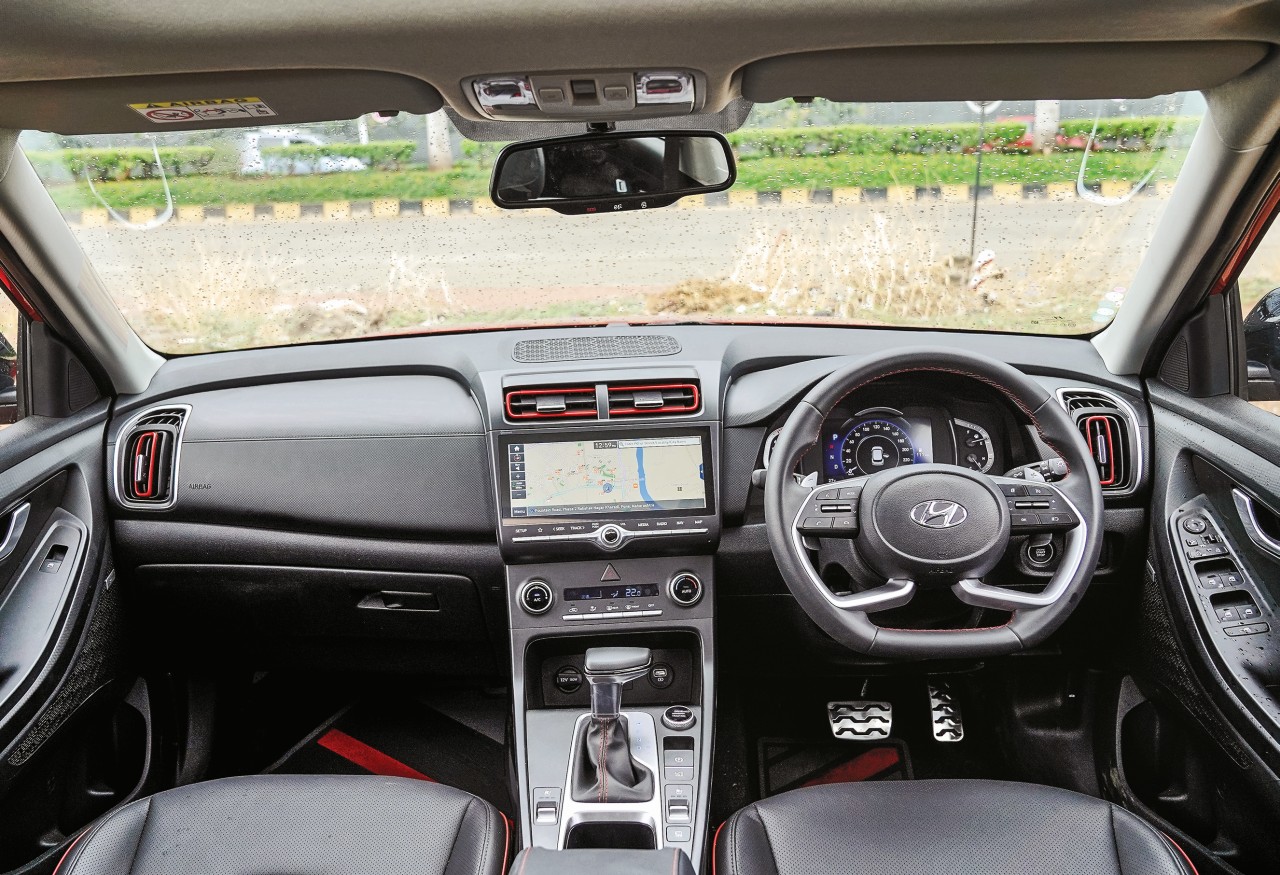
Interior
So, the obvious thing to do was to jump inside and take it out for a drive. Surprisingly, the cabin isn’t as radical as the exterior. Probably, I was really expecting it to be more edgy and futuristic because the Kia Seltos offered just that. On the contrary, the Creta has a conventional Hyundai layout with high-grade materials and a good finish, which isn’t a bad thing after all. It’s an interesting mix of shapes and textures, a case in point being the a-c vents and the four-spoke D-cut steering wheel. Sadly, the steering is only adjustable for height and not for reach.
Cabin Features
Hyundai have mastered the art of perfectly spec-ing their cars and that is a major contributor to the brand’s large cult following that it has managed to garner over the years. The Creta being its blockbuster model, the company has ensured to fill it to the brim with features. In fact, some of the stuff is not even available in cars in a segment or two above. For instance, the large 10.2-inch touchscreen infotainment system that has BlueLink connectivity and obeys your voice command. People with classic taste will be happy to see a physical volume button, though you can use the steering-mounted buttons to control the music system. A small issue I faced was that the voice command button sometimes gets pressed unintentionally while turning the steering wheel. (Also Read: Kia Seltos 1.4 Turbo-Petrol DCT Road Test)
Those with a keen ear for music will enjoy the Bose music system which is offered in the higher variants of this car. Most impressive is the panoramic sunroof, a first in this segment, which is likely to win the hearts of plenty of buyers; though, personally, I don’t understand this fascination. Like its rival, the Creta boasts of wireless charging, integrated air purifier, single-colour ambient lighting, and window-blinds in the rear. Speaking of which, the rear bench is firm and could do with more under-thigh support, but the adjustable back-rest and neck pillow make the journey pretty cosy. Another segment-first are the ventilated front seats, which will come handy during peak summer.
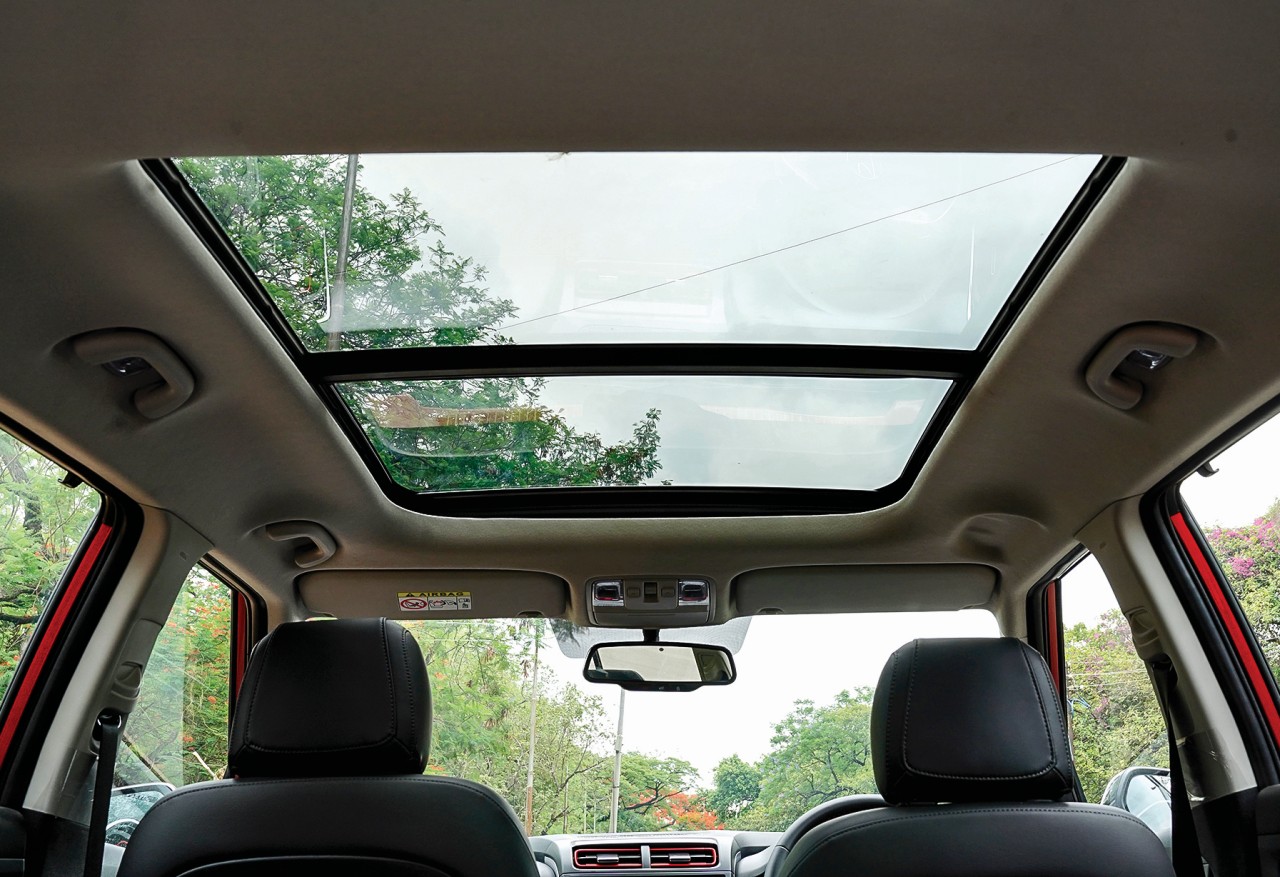
Driver’s Aid
The DCT also offers traction modes to tackle tricky surfaces such as snow, mud, and sand, while the higher trims also come with driver aids such as ESC and Vehicular Stability Management, electronic parking brake, hill start assist, and the protection of six airbags. There’s a neat seven-inch digital driver’s information display which comes with an analogue rev counter, while the dials change colour depending on the drive mode you select. I was surprised that the Creta did not include a display for the blind-spot cameras, which the Kia Seltos has and I feel all cars should for the sake of safety.
Engine
Now coming to the 140 hp of the petrol-turbo. This variant, as I mentioned earlier, would be my pick if I were thinking of buying a Creta. The is the exact same engine that is also used by the Seltos and, as in the Kia, comes with the option of a slick seven-speed dual-clutch transmission. The engine refinement is top-notch with barely any NVH filtering into the cabin. Drive with a heavy foot and it emits an encouragingly sporty exhaust note.
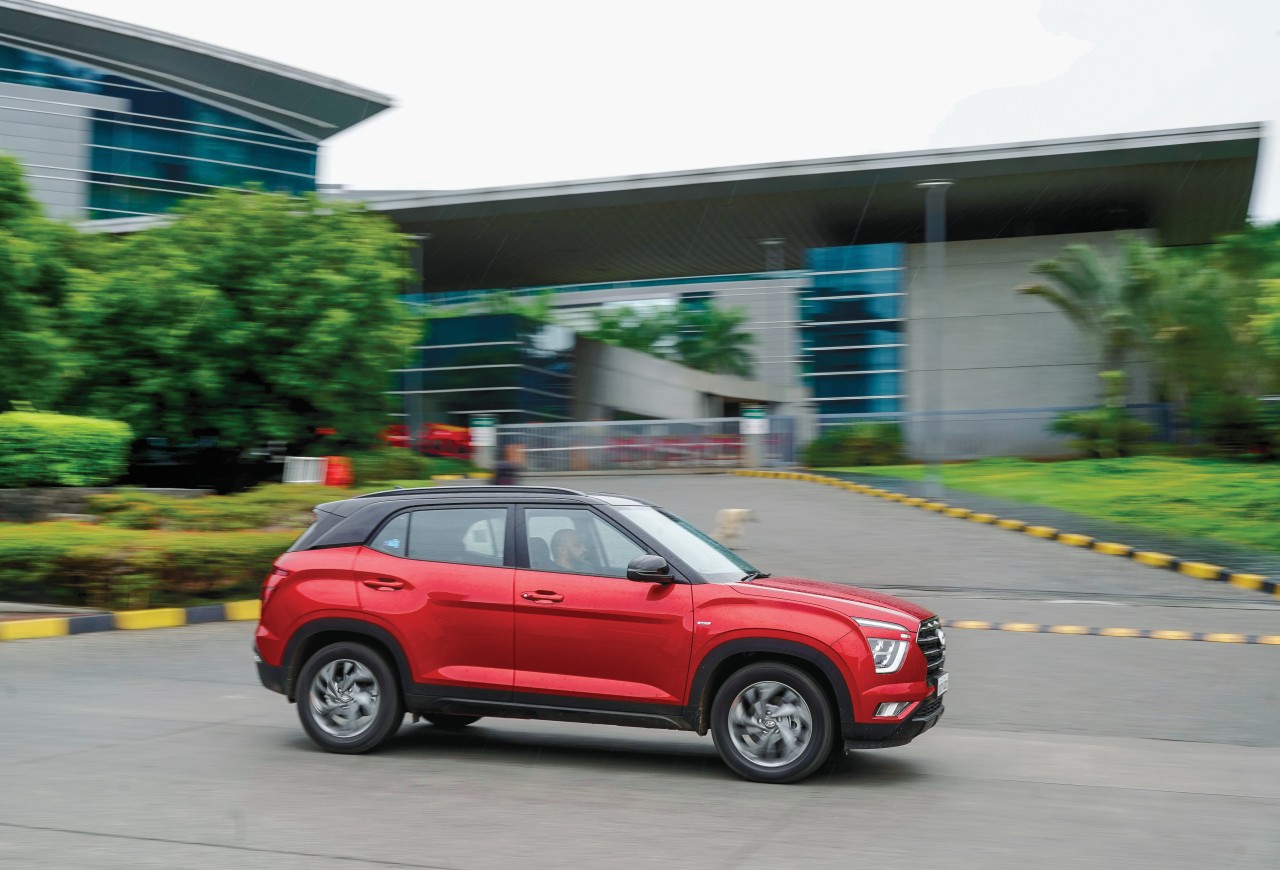
Performance
This is the only model in the segment to offer paddle-shifters and they work brilliantly with the DCT. The seven-speed is quick and responsive and with the manual control gives the driver a great sense of control. Twist the dial to Sport mode and the gear shifts become more aggressive and the drive becomes more enjoyable. We managed to hit 100 km/h from zero in a very respectable 9.13 seconds, making the 2020 Creta a whole four seconds quicker than the outgoing automatic model. It crossed the quarter-mile mark in an equally impressive 16.72 seconds, doing 139.70 km/h.
Another aspect that gives the new model strong driveability is the 242 Nm of torque that starts to flow at just 1,500 rpm. This reflects in the roll-ons as you can step on the gas and go from 40 km/h to 80 km/h effortlessly in just four seconds. This versatile character of the motor helps the Creta quickly transform from a corner-carving machine into a humble city cruiser.
Milage
Just switch to Comfort mode and the shifts come early to keep the revs around 2,000 rpm. Be gentle on the throttle and it cruises at 60 km/h in seventh gear. On the highway, the Creta can comfortably stretch a litre of fuel for over 16 km but within the city, it drops to just over 11 km/l. A note of caution to all the Baby Driver fans — if you keep pushing the petrol-turbo, the fuel economy won’t hesitate to drop below 10 km/l.
Ride and Handling
The driving dynamics of the Creta have been enhanced further in the 2020 version and it feels a whole lot more premium now. The ride is surprisingly plush and capable of tackling most road irregularities without upsetting the cabin. This means that you have to deal with slight body-roll while driving hard around a bend, though it never becomes a handful. In fact, the occupants are driven in a luxury car-like comfort and only severe potholes manage to perturb them. The steering feel and weight have also been improved, giving you better control than before, though some drivers might still be left wanting more feedback.
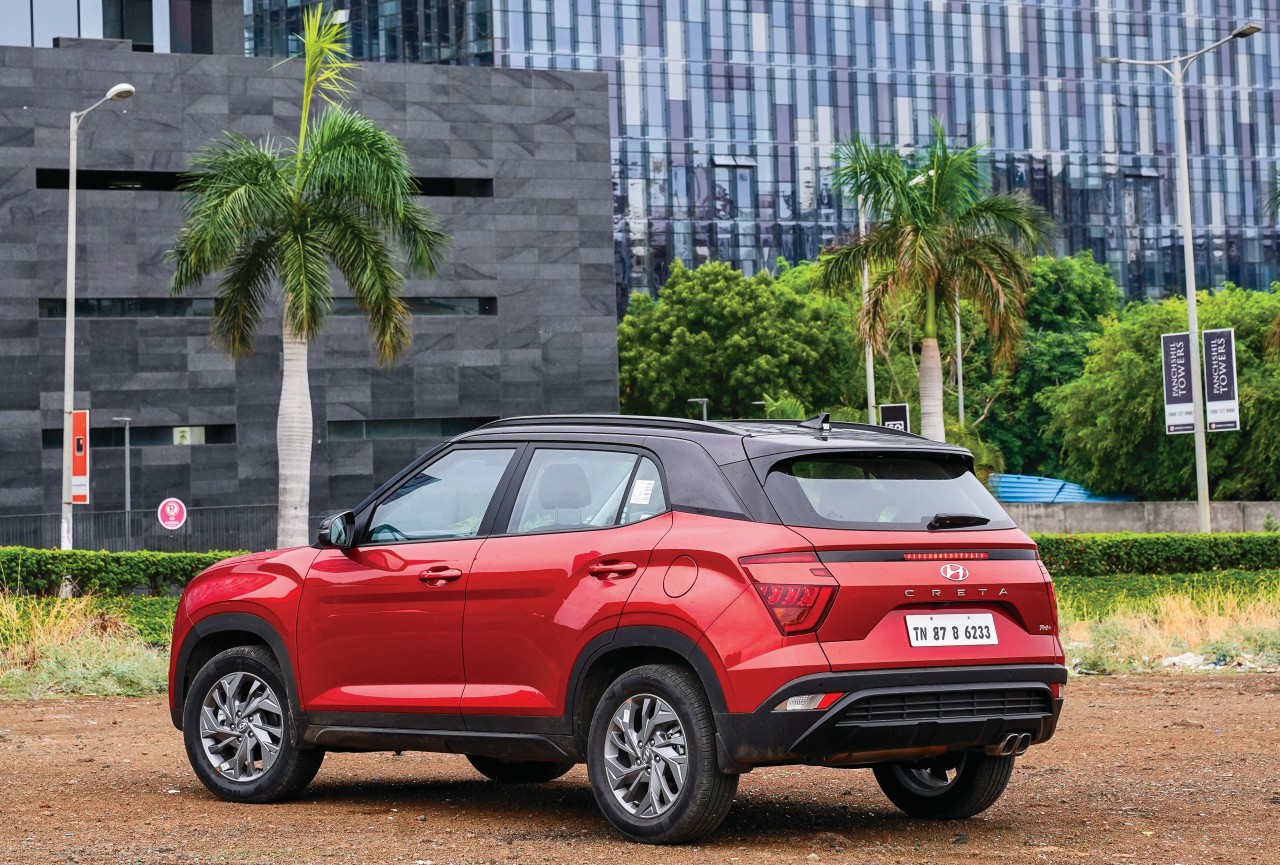
Conclusion
Talking about control, having discs on all four wheels does inspire you to drive faster, as you can brake harder confidently. Jam the pedal and it anchors from 80 km/h to zero in 26.54 metres and 2.38 seconds in a straight line and without drama. The ABS, too, isn’t as trigger-happy as before and this helps the dynamics further. The combination of a peppy motor, composed ride and handling, and trustworthy brakes is what makes this variant of the new Creta such a compelling offering. Now only if I had Rs 20 lakh (on-road price) to spare.
(Also Read: Tata Gravitas vs MG Hector Plus vs Mahindra XUV500 – Which Would You Have?)




















Leave a Reply